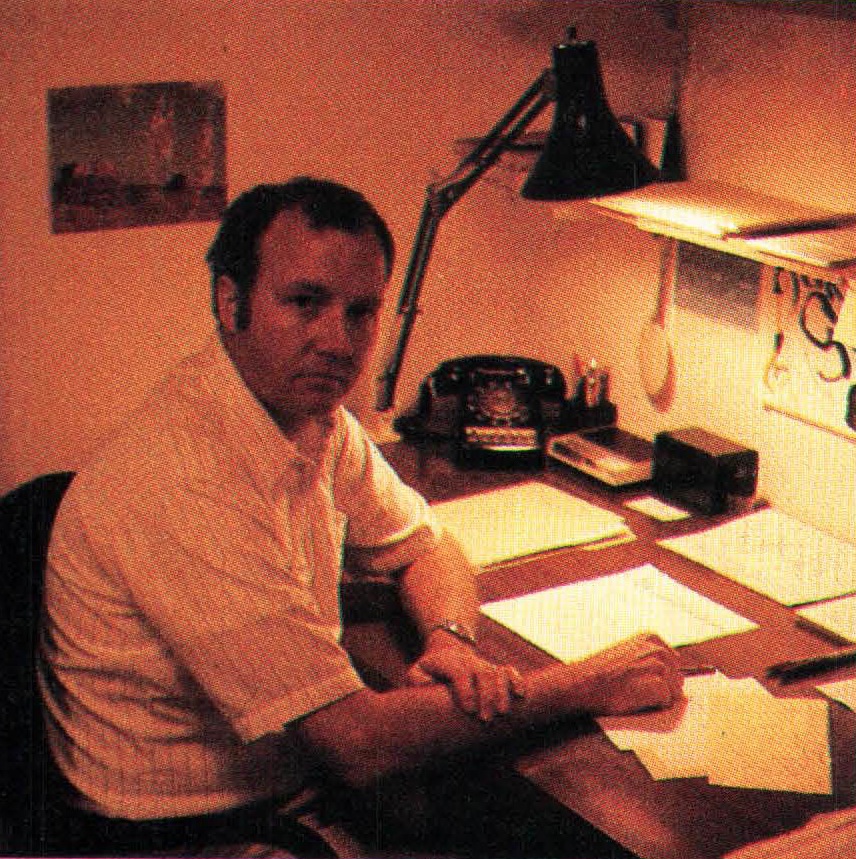
Given the computer industry’s early indifference to personal computers, the task of developing such a machine fell to those people who dreamed of owning their own computers – electronic hobbyists. One of those hobbyists was a graduate student named Jonathan A. Titus, who was studying for a doctorate in chemistry at Virginia Polytechnic Institute, in Blacksburg. The son of an attorney, Titus grew up in Huntington, New York, a comfortable middle-class suburb on Long Island’s north shore. After taking a B.S. in chemistry at Worcester Polytechnic Institute in Worcester, Massachusetts, he went on to Rensselaer Polytechnic Institute (Hoff’s alma mater), where he picked up a master’s. Along the way, he became deeply interested in scientific instrumentation. Titus knew a great deal about electronics – he loved to tinker with gadgets in his spare time – and he, for one, was fully aware of the microprocessor’s significance.
When Intel introduced the eight-bit 8008, Titus studied the chip’s specifications. Realizing that it was powerful enough to run a minicomputer, he ordered an 8008 from Intel- the chips cost $120 apiece – and received a free applications manual, full of circuit diagrams, along with it. Using the diagrams as his jumping-off point, he went to work and had a computer prototype ready by the fall of 1973. Although he had built the gadget for his own enjoyment, Titus wanted to share his design with other hobbyists; the idea of establishing a computer company didn’t even occur to him. So he wrote a couple of letters to Popular Electronics and Radio-Electronics, two well-known hobbyist magazines, asking whether they would be interested in running a how-to-build-it article on the Mark-8, as he called his invention. Popular Electronics turned him down, considering the Mark-8 more of an educational project than a truly useful computer, but Radio-Electronics was intrigued, and Larry Steckler, one of the magazine’s editors, flew down to Blacksburg to examine the Mark-8.
The machine was about the size of a large breadbox. It consisted of six circuit boards, one of which held the 8008 and related chips, another the RAM chips, and so on. At the very least, it required a memory of eight 256-bit RAMs (in other words, 256 bytes or words), but the memory could be expanded up to 16K by adding more RAM memory boards. There wasn’t any ROM – Titus would have had to pay Intel thousands of dollars to make ROMs for the Mark-8 – which meant that every instruction had to be entered by the user and that the programs were lost when the machine was shut off. (RAMs retain their data only as long as the power is on.) And those programs had to be entered one bit at a time by flipping a set of toggle switches on the face of the machine – a painstaking and error-prone procedure. The results were displayed on a panel of lights next to the switches.

Titus’s piece ran in the July 1974 issue of Radio-Electronics. Although the article was the magazine’s cover story, it appeared without any hoopla. The cover featured a picture of the machine and, above it, a sober, unimaginative headline: “Build the Mark-8, Your Personal Minicomputer.” There were six other headlines on the page, all competing for the reader’s attention. The article itself was quite technical, but, being only four pages long, it didn’t supply enough information to actually build the machine. That was intentional; if you wanted more details, you could send away for a forty-eight-page instruction manual, written by Titus and published by Radio-Electronics, for $5.50. You could also buy the circuit boards, in an arrangement worked out by Titus, for $47.50 from Techniques, Inc., a small firm in Englewood, New Jersey. (Titus earned royalties for every booklet and set of boards sold.) As for the components, you had to buy them from Intel and other companies. Altogether, the Mark-8 cost about $250 to build – in addition to a lot of time and trouble.
Titus’s invention struck a vibrant chord among Radio-Electronics’ readers. About ten thousand people bought the instruction booklet and about a fourth as many sent away for the boards. Unfortunately, there’s no way of knowing how many Mark-8’s were actually built; probably one to two thousand. At least two Mark-8 computer clubs sprung up – one in Lompoc, California, another in Denver, Colorado – each with its own chatty and informative newsletter. Not satisfied with the basic machine, some of the more determined and talented hobbyists went on to build their own paper- tape readers and other peripherals, which made the chores of entering programs and recording results considerably easier. Although it’s inappropriate to call Titus the inventor of the personal computer – the machine had many parents, including Intel – the Mark-8 was the first seed in a grassroots movement to make computers available to everyone.